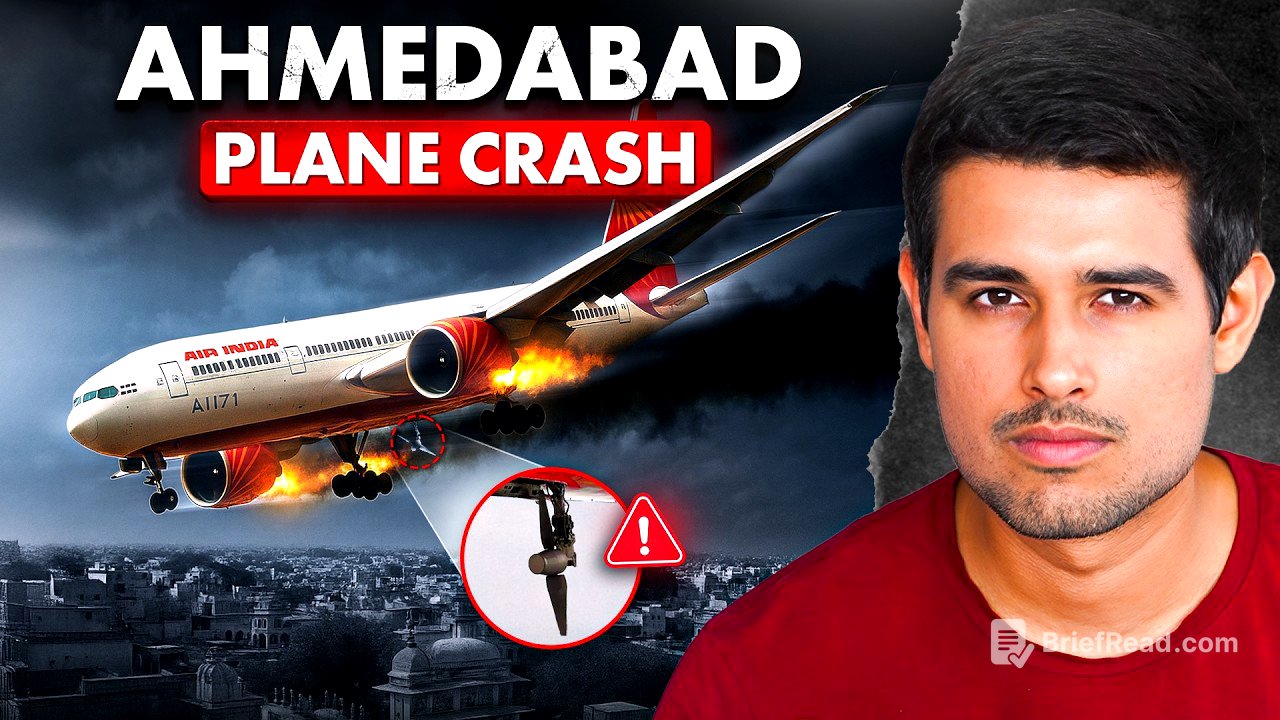TLDR;
This video talks about the tragic crash of Air India flight AI-171 in Ahmedabad, exploring potential causes ranging from pilot error to manufacturing defects in the Boeing 787 Dreamliner. It highlights the importance of AI skills for the future and also touches upon past incidents and safety concerns related to Boeing and Air India.
- The crash of Air India flight AI-171 shortly after takeoff from Ahmedabad airport.
- Potential causes investigated include pilot error, fuel contamination, electrical or mechanical failure, and manufacturing defects.
- Past safety concerns and incidents involving Boeing 787 Dreamliner aircraft are discussed.
- Questions raised about Boeing's safety standards and Air India's maintenance practices.
Introduction to the Air India Flight AI-171 Crash [0:00]
The video starts with news snippets about a plane crash and past issues with the aircraft. It then sets the scene for Air India flight AI-171 on June 12, 2025, which was delayed and flown by a Boeing 787 Dreamliner. A passenger, Akash Vatsa, noticed issues like malfunctioning air conditioning and entertainment systems, which he shared on social media. The flight eventually took off from Ahmedabad with 230 passengers and crew, captained by Sumit Sabharwal, an experienced pilot.
The Fateful Takeoff and Crash [1:18]
The flight took off from runway 23 at 1:38 PM. A 17-year-old boy named Aryan, who was filming the takeoff, captured footage showing the landing gear not retracting. Shortly after, the pilots reported "no thrust" to air traffic control before communication was lost. Just 34 seconds after takeoff, the plane crashed near BJ Medical College, causing a fire. Only one passenger, Vishwas Kumar Ramesh, survived by escaping through an emergency exit. The expected death toll is over 270.
Initial Investigation and Evidence [6:06]
The Air Accidents Investigation Bureau is investigating the crash with help from UK and US teams. The black boxes have been recovered and sent to the US for analysis. Besides the black box data, investigators are looking at flight radar data and two key videos: one filmed by Aryan showing the plane's takeoff and another from airport CCTV. Aryan's video shows the landing gear was not retracted and the flaps were not correctly positioned.
Possible Causes: Pilot Error vs. Mechanical Failure [11:53]
The video explores potential causes, starting with pilot error. However, the pilot's experience and the presence of warning systems make this less likely. Another theory suggests a complete loss of power. Aryan's video seems to show the deployment of the Ram Air Turbine (RAT), a small wind turbine that provides emergency power. The deployment of the RAT, along with a passenger's report of a loud noise and flickering lights, suggests a significant power failure.
Theories Behind the Power Loss [15:51]
The video discusses three main reasons for RAT deployment: electrical failure, hydraulic failure, or dual-engine failure. Dual-engine failure is rare, but the pilot reporting "no thrust" and the landing gear not retracting support this theory. The most popular theory is fuel contamination, which can cause engine failure. Other possibilities include electrical system failure or mechanical issues related to manufacturing.
Past Issues with Boeing's Dreamliner [20:45]
The video highlights past problems with Boeing's 787 Dreamliner, including engine issues, battery failures, and manufacturing defects. In 2013, Dreamliners were grounded worldwide due to battery problems. There have also been accusations of improper assembly and use of mismatched parts to cut costs. Whistleblowers have raised concerns about safety and quality control at Boeing's Charleston factory.
Concerns About Boeing and Air India [27:07]
The video questions whether Boeing prioritizes profits over safety, referencing past crashes of the 737 MAX. It also raises concerns about Air India's maintenance practices and pilot fatigue since its acquisition by the Tata Group. The Directorate General of Civil Aviation (DGCA) found falsified audit reports, and there have been incidents of passengers falling ill on Air India flights. The preliminary crash report is expected 30 days after the incident. The video concludes that the crash likely resulted from multiple failures at different levels.









